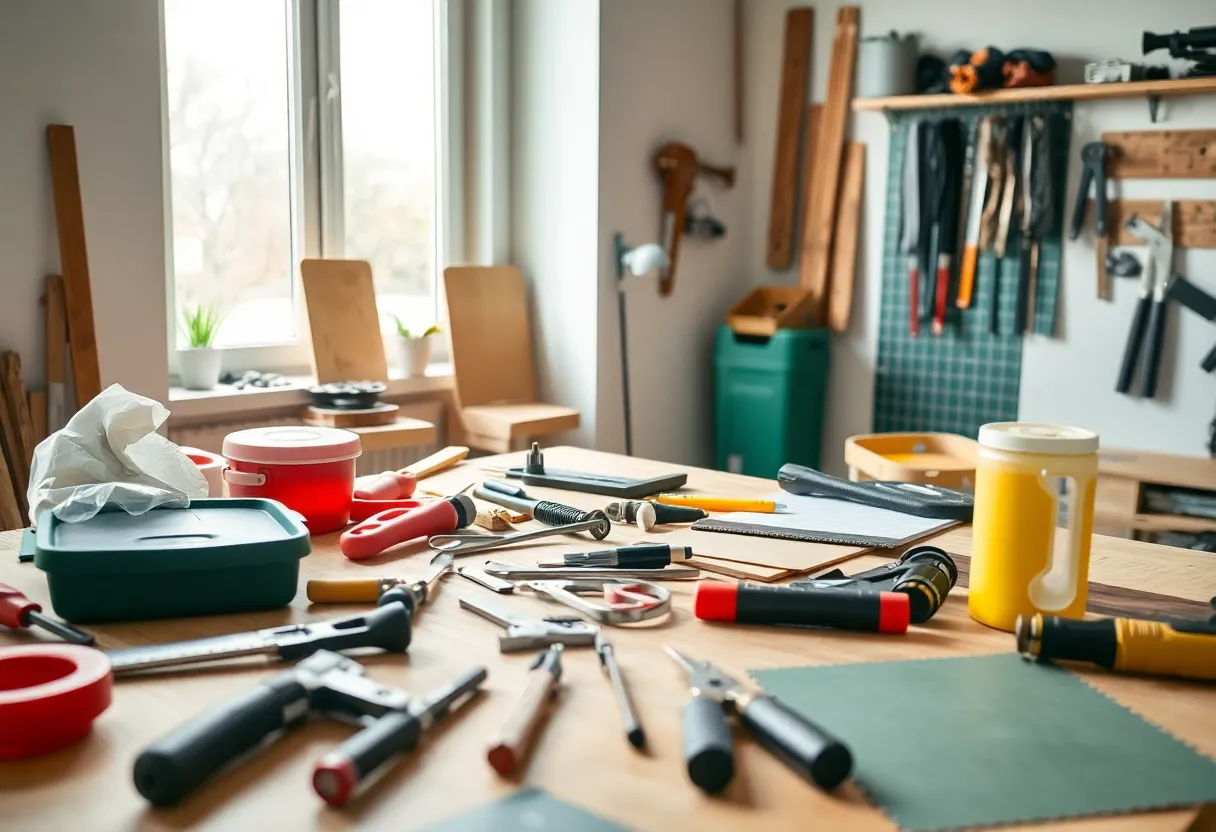What Are the Essential Steps for a Successful DIY Home Repair Project?
Embarking on a DIY home repair can be both rewarding and cost-effective. The key to success lies in careful planning, proper execution, and knowing when to seek professional help. This guide outlines the critical steps necessary to ensure your project is completed efficiently, safely, and to a high standard.
Assessing the Scope and Planning Effectively
Identify the Problem Precisely
Begin by thoroughly inspecting the issue. Gather evidence of the problem’s extent. For example, if a leaking pipe is suspected, locate the exact source and assess whether the damage is confined or widespread. The clearer the diagnosis, the easier the subsequent steps.
Research and Gather Information
Consult reputable sources to understand the repair process. Look for detailed tutorials, safety guidelines, and compatible materials. Avoid vague instructions; instead, prioritize precise, step-by-step guides aligned with your specific problem.
Develop a Detailed Plan
Break down the repair into manageable components. Create a checklist of materials and tools needed. Assign realistic timelines and consider potential obstacles. Planning reduces errors and prevents unnecessary delays or repeated work.
Establish a Budget
Estimate costs upfront by compiling prices for parts and tools. Allocate extra funds for unforeseen expenses, often affecting DIY projects. A well-planned budget helps maintain control and prevents project abandonment mid-way.
Gathering Tools and Materials
Select the Right Tools
Use specialized tools for each task. For instance, a drywall saw for wall repairs, or a caulking gun for sealing gaps. Quality tools improve precision, safety, and efficiency, making the process smoother and outcomes more professional.
Choose Appropriate Materials
Inspect the durability, compatibility, and environmental considerations of repair materials. For example, select waterproof sealants for exterior fixes. Using the correct materials ensures longevity and reduces the need for future repairs.
Prioritizing Safety and Compliance
Wear Protective Equipment
Safety gear is non-negotiable. Use goggles, gloves, masks, and ear protection where necessary. Proper PPE minimizes injury risks during cutting, drilling, or handling hazardous substances.
Understand Relevant Regulations
Research local building codes and permit requirements. Some repairs, such as electrical or structural modifications, might need inspections or permits. Complying ensures safety standards and prevents legal complications.
Executing the Repair with Precision
Follow Step-by-Step Procedures
Adherence to detailed instructions minimizes mistakes. Avoid rushing; precision surpasses speed. For example, when fixing flooring, accurate cutting and proper leveling are crucial to avoid uneven surfaces.
Maintain a Clean Working Environment
Clear debris and organize tools regularly. A tidy space decreases accident risk and streamlines workflow. Proper disposal of waste materials also prevents hazards and conforms to environmental guidelines.
Document the Process
Photograph each stage for future reference or to troubleshoot if issues arise. Keeping records facilitates repairs or upgrades later and provides proof of compliance should inspections occur.
Addressing Challenges Effectively
Be Prepared for Unexpected Issues
Delays and surprises are common in DIY projects. Allocate contingency time and resources. When encountering unforeseen problems, assess whether the scope extends beyond skills—consider consulting a professional if necessary.
Stay Patient and Persistent
Precision takes time. Avoid shortcuts that compromise quality or safety. Recognize when additional expertise is required—it’s better to seek professional help than to risk costly mistakes.
Final Inspection and Quality Control
Evaluate Your Work Carefully
Before considering the project complete, inspect all aspects. Check for leaks, stability, and overall finish. Conduct functional tests and ensure that repairs meet safety standards.
Test the Repair Under Real Conditions
Simulate normal use to confirm durability. For example, if fixing a door hinge, open and close multiple times to verify smooth operation. Testing prevents future failures and ensures satisfaction.
Finishing Touches and Maintenance
Clean and Restore the Area
Remove all debris, dust, and leftover materials. Repaint or touch up surfaces as needed for aesthetic consistency. Proper finishing enhances appearance and preserves the repair.
Schedule Routine Maintenance
Regular inspections extend the lifespan of your repairs. For example, check for leaks periodically or tighten fittings. Preventative care reduces long-term repair needs and associated costs.
Knowing When to Hire Professionals
Complex or High-Risk Repairs
Major electrical work, structural modifications, or plumbing issues often require licensed specialists. Attempting these without proper expertise can compromise safety and legality.
Limited Skills or Tools
If a repair demands specialized skills or equipment beyond your capacity, engaging a professional ensures quality and compliance. This investment often saves money in the long run, preventing damage caused by improper repairs.
Final Advisory: Emphasize Safety and Reality Check
Successful DIY home repairs stem from a combination of thorough preparation, skilled execution, and knowing personal limits. Prioritize safety at every step. Remain realistic about abilities and project complexity.
Effective planning, precise tools, safety compliance, diligent execution, and honest assessment culminate in home repairs that last. This approach transforms a potentially stressful task into a rewarding experience, boosting confidence and home value.
Author: STAFF HERE NEW YORK WRITER
The NEW YORK STAFF WRITER represents the experienced team at HERENewYork.com, your go-to source for actionable local news and information in New York, the five boroughs, and beyond. Specializing in "news you can use," we cover essential topics like product reviews for personal and business needs, local business directories, politics, real estate trends, neighborhood insights, and state news affecting the area—with deep expertise drawn from years of dedicated reporting and strong community input, including local press releases and business updates. We deliver top reporting on high-value events such as New York Fashion Week, Macy's Thanksgiving Day Parade, and Tribeca Film Festival. Our coverage extends to key organizations like the Greater New York Chamber of Commerce and United Way of New York, plus leading businesses in finance and media that power the local economy such as JPMorgan Chase, Goldman Sachs, and Bloomberg. As part of the broader HERE network, including HEREBuffalo.com, we provide comprehensive, credible insights into New York's dynamic landscape.





